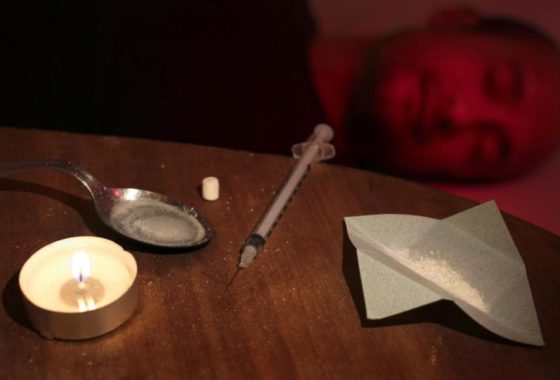
The needle and the damage done.
To Save Lives, Let Addicts Inject
With heroin overdoses on the rise, we're overdue for a smarter, more humane system
We are in the midst of an epidemic of opioid abuse, of which heroin addiction is the most visible manifestation. And while so much government effort has been expended to crack down on users and distributors, a simple public health approach would be far more effective at saving hundreds of lives.
The current scourge can be traced to the liberal prescribing of opioid painkillers over the past decade and their subsequent supply reduction over the past few years. Users have responded by switching to heroin due to its cheaper cost and broader availability. Many are also shifting to injecting because it requires less of the drug to get the same high.
As a result, heroin overdose deaths in New York have more than doubled in the past three years, according to newly released data from the Department of Health and Mental Hygiene.
In 2013, heroin accounted for 420 of 782 fatal overdoses in the five boroughs.
The threat of incarceration has done little to deter the use and sale of drugs and a robust public health response is long past due. The most effective and well-studied technique to reduce drug overdose deaths (and also slow the spread of HIV and Hepatitis C associated with IV drug abuse) are supervised injection facilities.
These are regulated places where injection drug users are permitted to inject pre-obtained drugs in a hygienic environment under the supervision of trained medical staff.
Users are provided with sterile injecting equipment and access to soap and water in order to reduce the spread of viral, bacterial and fungal infections. If an overdose occurs, the staff can intervene by administering oxygen and naloxone in order to reverse it and save a life.
Meantime, SIFs link intravenous drug users to social services such as detox, rehabilitation, housing and job training.
SIFs are recognized around the world as a highly effective harm-reduction technique that have been extensively studied by the medical community but remain unfamiliar to the general public.
There are more than 90 SIFs in operation throughout the world — and not a single one in the United States.
Why? They are both compassionate and cost-effective. An analysis of North America’s only SIF, in Vancouver, British Columbia, suggests a cost savings of $5 for every dollar invested in the operation, accountable to reductions in overdose deaths, disease transmission and the cost of treating diseases over time.
Most importantly, long-term studies suggest that — contrary to stereotype — the operation of SIFs does not increase drug use within the community they’re situated. Nor does data show an increase in drug-related crime.
While helping prevent disease transmission and overdose deaths, SIFs benefit the wider community. Drug users are no longer forced to inject in public spaces such as schoolyards, parks and alleyways. As a result, the littering of drug paraphernalia will be reduced on streets and public spaces.
It is time for communities to act collectively and begin implementing harm reduction programs recognized the world over at reducing disease transmission and overdose deaths. The federal Crack House Statute, enacted in 1986, unintentionally restricted the operation of SIFs — but states have the right and authority to authorize and operate these facilities.
All we need is leaders with the courage to take this life-saving step.
Wolfson-Stofko, Ph.D. is a consultant for BOOM!Health and lives in the Bronx.